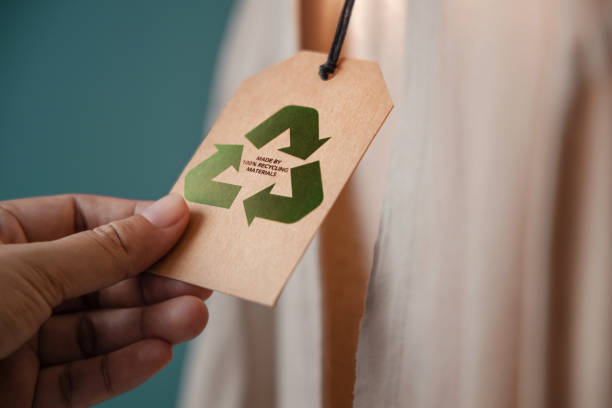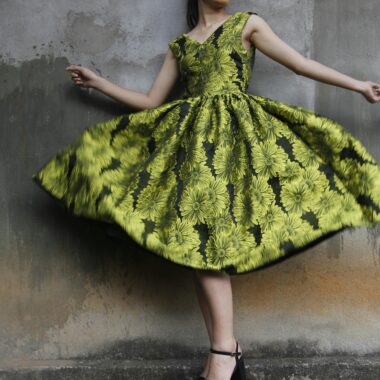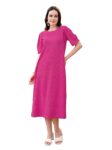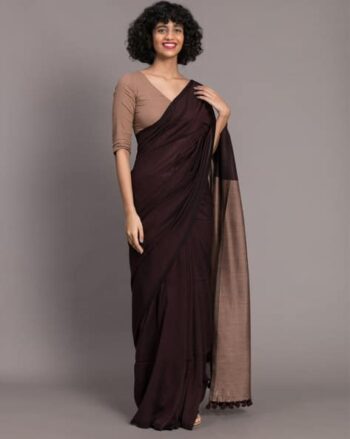Our skin is the body’s largest organ. It protects us from the outside world and reacts to everything it touches—including the clothes we wear. If you’ve ever had itchy, red, or irritated skin after wearing certain clothes, the fabric might be the reason. Today, more people are turning to sustainable fabrics not just to help the planet, but also to protect their skin.
In this blog, we’ll explain what sustainable fabrics are, how they’re different from synthetic ones, and how they can help reduce skin irritation. We’ll also share the best sustainable fabrics for sensitive skin, and tips to shop for gentle, eco-friendly clothing.
What Is Skin Irritation?
Skin irritation happens when your skin reacts badly to something. It may become:
- Red
- Itchy
- Dry or flaky
- Swollen
- Rashy or bumpy
Clothing is one of the most common causes of skin irritation. Some fabrics, chemicals, or dyes used in clothes can make the skin uncomfortable—especially if you have sensitive skin, eczema, or allergies.
How Sustainable Fabrics Help Prevent Skin Irritation
If you’re searching for safer clothing alternatives, check out DesiHatt’s collection of sustainable fabrics for breathable, natural clothing that’s gentle on sensitive skin.
Why Fabrics Can Irritate Skin
Not all fabrics are created equal. While sustainable fabrics are gentle and breathable, many synthetic or chemically treated materials can irritate the skin. Here’s why fabric choice matters and why switching to eco-friendly fabrics can improve comfort and wellness.
1. Synthetic Materials vs. Sustainable Fabrics
Fabrics like polyester, nylon, acrylic, and spandex are made from plastics and chemicals. They trap heat, prevent breathability, and often cause itching or rashes.
Why Choose Natural and Sustainable Fabrics?
Organic cotton, bamboo, hemp, and linen allow your skin to breathe and reduce irritation, making them healthier alternatives.
2. Harsh Chemicals and Dyes
Many clothes are treated with formaldehyde, pesticides, synthetic dyes, and softening agents. These can stay in the fabric and touch your skin, causing allergies or irritation.
3. Rough Textures
Some fabrics are too rough or stiff. They can rub against your skin and cause friction, which leads to redness or discomfort.
What Are Sustainable Fabrics?
Sustainable fabrics are materials that are made in eco-friendly, safe, and ethical ways. They are good for the environment and gentle on your skin.
Key features of sustainable fabrics:
- Made from natural or recycled materials
- Produced with less water, energy, and chemicals
- Often biodegradable
- Non-toxic and safe for sensitive skin
- Long-lasting and breathable
Unlike fast fashion clothing, which often uses harmful synthetic fabrics, sustainable fashion focuses on health, comfort, and planet-friendly materials.
How Sustainable Fabrics Help Reduce Skin Irritation
Here’s how switching to sustainable fabrics can protect and improve your skin health:
1. Fewer Chemicals
Sustainable fabrics are often made without harmful chemicals. Organic versions are grown without pesticides or fertilizers, and the dyes used are natural or non-toxic. This means fewer allergens come in contact with your skin.
2. Breathability
Many sustainable fabrics like cotton, bamboo, and linen are very breathable. They allow air to circulate, keeping your skin cool and dry. This reduces sweating and prevents heat rashes or clogged pores.
3. Soft and Gentle Textures
Sustainable fabrics are often softer than synthetic ones. This means less friction, less rubbing, and fewer chances of irritation, especially for babies or people with eczema.
4. Moisture Absorption
Natural fabrics like organic cotton or bamboo absorb sweat and dry quickly. This keeps the skin dry and prevents the growth of bacteria or fungus—common causes of skin infections and irritation.
5. Hypoallergenic
Many eco-friendly fabrics are naturally hypoallergenic, meaning they are less likely to cause allergic reactions. They are safe even for very sensitive skin.
Best Sustainable Fabrics for Sensitive Skin
Here are some of the top eco-friendly materials that are gentle on the skin:
1. Organic Cotton
- Grown without pesticides or synthetic chemicals
- Soft, breathable, and hypoallergenic
- Perfect for daily wear, baby clothes, and underwear
Tip: Look for GOTS-certified organic cotton for the highest safety.
2. Bamboo Viscose (Eco-processed)
- Naturally antibacterial and odor-resistant
- Extremely soft and silky
- Thermoregulating – keeps you warm in winter and cool in summer
Note: Make sure it’s processed in a sustainable way (closed-loop processing).
3. Linen
- Made from flax plant
- Very breathable and durable
- Gets softer with every wash
- Good for hot, humid weather
Note: Can be slightly rough at first, so choose pre-washed or blended versions if you have very sensitive skin.
4. Hemp
- Naturally antibacterial
- UV-resistant and moisture-wicking
- Strong and long-lasting
- Grows easily without much water or chemicals
Tip: Great for outerwear, casual clothing, and people with skin allergies.
5. Tencel (Lyocell)
- Made from sustainably-sourced wood pulp
- Smooth and lightweight
- Absorbs moisture better than cotton
- Naturally resistant to bacteria
Best for: Activewear, undergarments, sleepwear
6. Silk (Ethically sourced)
- Smooth texture reduces friction
- Helps skin retain moisture
- Naturally hypoallergenic
Best for: Sleepwear, pillowcases, beauty and sensitive skin routines
Fabrics to Avoid for Sensitive Skin
If you’re trying to prevent skin irritation, try to avoid these materials:
1. Polyester
- Traps heat and moisture
- Non-breathable
- Often treated with harmful dyes and chemicals
2. Nylon
- Made from petrochemicals
- Can cause friction and sweating
- Common in activewear but not skin-friendly
3. Acrylic
- Itchy texture
- Can irritate dry or damaged skin
- Often used in cheap sweaters
4. Spandex (Lycra)
- Often blended into tight clothes
- Can cause heat buildup and chafing
- Avoid as the main fabric, especially in undergarments
How to Shop for Skin-Friendly Sustainable Clothing
Shopping for eco-friendly and gentle fabrics is easy when you know what to look for.
1. Read Labels Carefully
Look for 100% organic cotton, bamboo, hemp, or other natural materials. Avoid blended fabrics that include polyester or nylon.
2. Look for Certifications
Choose clothing with:
- GOTS (Global Organic Textile Standard)
- OEKO-TEX® Standard 100
- Fair Trade Certified
- TENCEL™ or Lenzing tags
These labels ensure the fabric is safe, sustainable, and free from harmful chemicals.
3. Wash New Clothes Before Wearing
Even sustainable clothes may have dust or leftover dye. Washing helps remove any residue and softens the fabric.
4. Avoid Bright Synthetic Dyes
Very bright or neon-colored clothes may use harsh dyes. Choose pastel, light, or natural tones for lower chemical exposure.
5. Feel the Fabric
If shopping in a store, touch the fabric. Soft, breathable materials usually feel light and comfortable. Avoid rough, stiff, or plastic-like textures.
Best Sustainable Clothing Items for Skin Health
If you’re making the switch, here are some recommended items:
- Underwear: Organic cotton or bamboo is best. It touches sensitive areas all day.
- Sleepwear: Choose breathable materials like bamboo or Tencel. Helps skin recover at night.
- Baby Clothes: Babies have extra-sensitive skin. Always pick organic cotton or hypoallergenic bamboo.
- Activewear: Tencel and organic cotton blends allow movement while keeping sweat away.
- Socks and Undergarments: Use natural fibers to avoid fungal infections and irritation.
Conclusion: Go Green for Healthy Skin
Your skin deserves to breathe and stay irritation-free. Switching to sustainable fabrics is not only good for the planet but also the best choice for your skin health. Clothes made from organic cotton, bamboo, linen, hemp, and Tencel are soft, safe, and soothing for all skin types.
Avoid harsh synthetic materials and chemical-laced fast fashion. Make smarter clothing choices for a healthier you and a cleaner world.
Comfort, care, and consciousness—start with your clothes.










